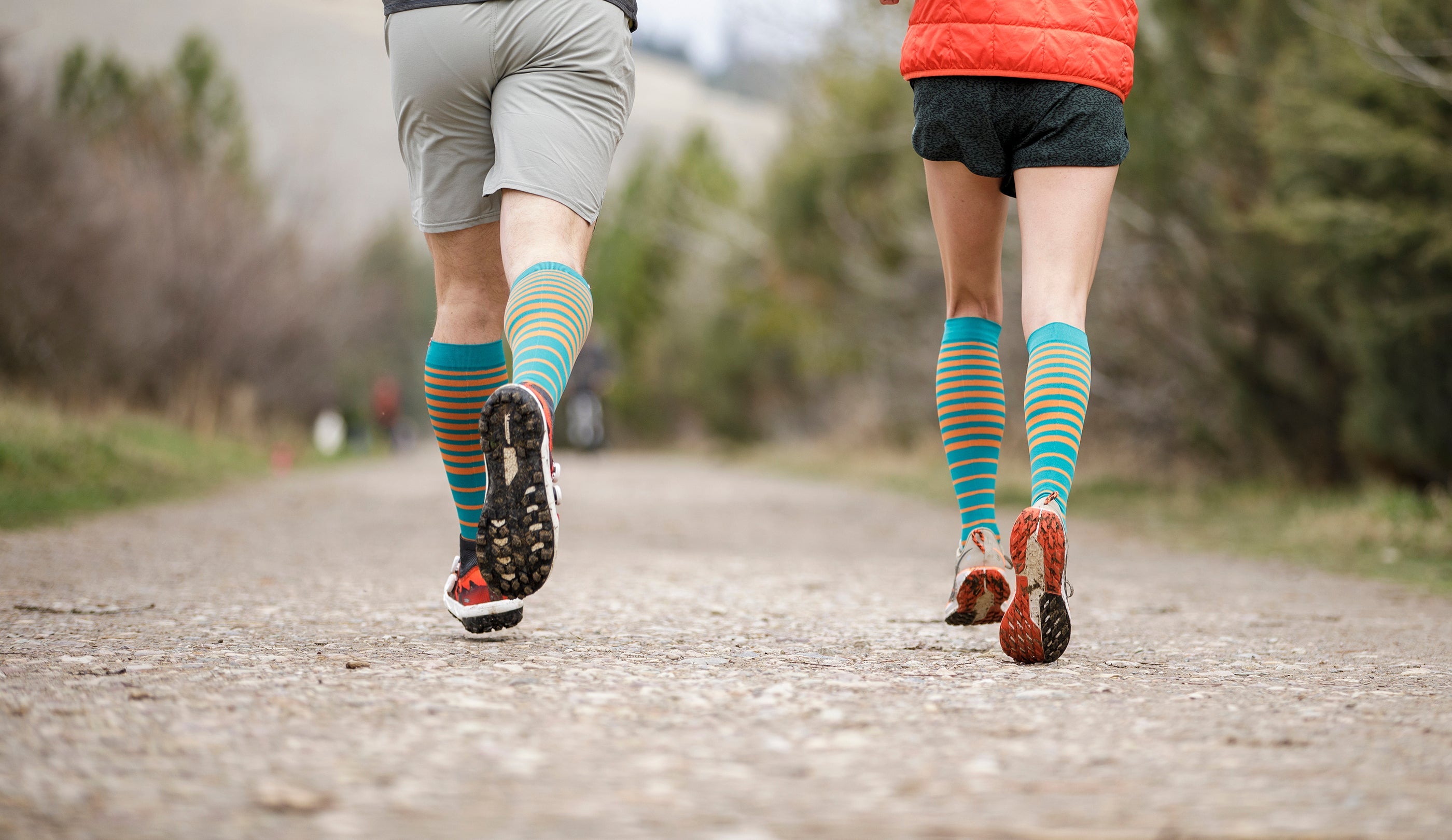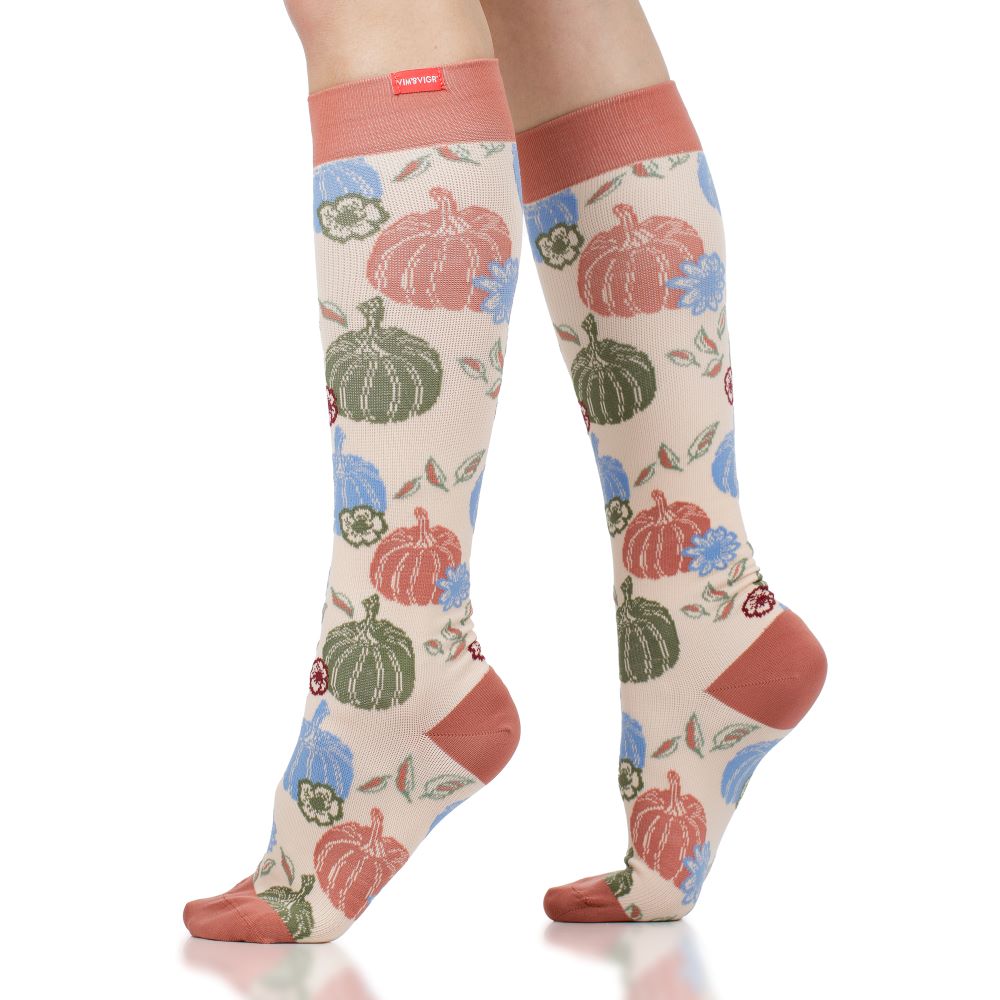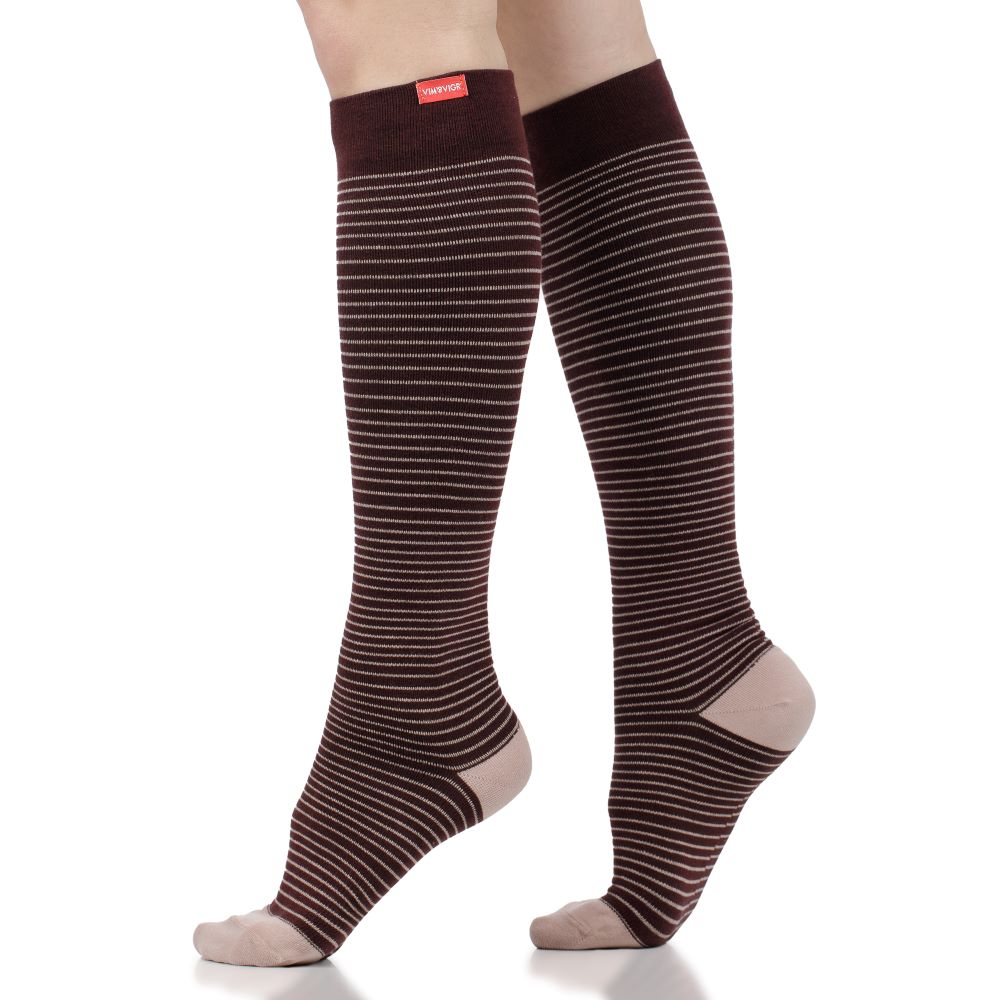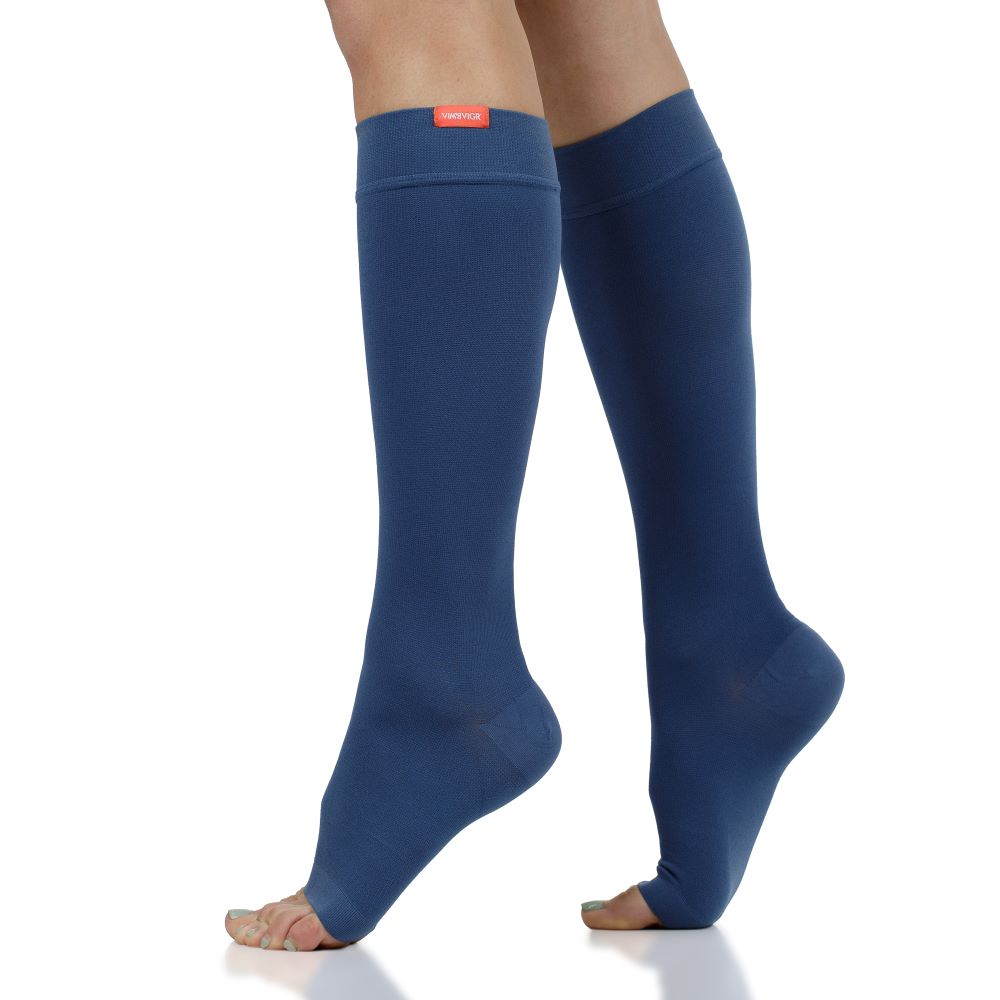The Benefits of Compression Socks for Teachers
Among the most notable professions involving standing a lot during the day, teaching is high up there. It’s a demanding job - physically, mentally, and emotionally. Teachers invest their energy into supporting kids’ development, but they also spend a whole lot of time standing and walking around.
Because of how long they spend on their feet, teachers need all the support they can get for their lower limbs. To avoid developing blood clots and varicose veins, to freshen up their legs after a long day teaching, and to keep their muscles and joints healthy, compression socks can be of huge benefit to teachers.
Why should teachers reach for compression socks to boost their circulation and improve the wellbeing of their legs and feet? Read on to find out how compression socks work, why they can be so great for teachers, and how you can wear them for best results and style points.

Are Compression Socks Good for Teachers?
Compression socks can provide multiple benefits to those who wear them. During long stints spent standing or walking around, they’re a great help for keeping blood flowing freely from the lower limbs back up to the heart. This influence on the circulatory system ensures that there’s a lower risk of developing a blood clot or more serious conditions like deep vein thrombosis.
Additionally, the life of a teacher is usually made up of long, tiring days. When you come home from school, you may not have the time or energy to exercise or go out for some fresh air, moving the legs and preventing your ankles from swelling up (especially if it’s hot out). If you’re prone to just sitting down at dinner and maybe in front of the TV, you’re not allowing blood to flow freely towards the lower limbs and back up to the heart, bringing with it much needed oxygen and nutrients for the muscles. Compression socks can help with that, as especially graduated compression stimulates blood circulation and is beneficial for muscle recovery.
Finally, teachers work hard and deserve a relaxing rest after the days spent in school. Compression socks perform a gentle, calming massage to the lower legs, re-energizing and relaxing them before the following day. They can also be very pleasant to wear over night.

What are Compression Socks + How Do They Work?
Compression socks are a type of lower leg garment that covers the feet up to just below the knees, exerting gentle pressure on the lower limbs. Graduated compression socks are tighter near the ankle and reduce pressure as they climb, which supports upwards blood flow.
Teaching and other professions that involve standing a lot carry risks around lower limb blood circulation. These include swelling and discomfort, but can also lead to blood clots, deep vein thrombosis, or varicose veins.
Wearing compression socks ensures that blood continues to flow as well as possible during these long periods of standing. They have also been proven to speed up recovery and reduce swelling and aches and pains in the lower limbs. Moreover, compression socks and stockings for teachers offer a slightly better level of support for the joints and muscles than regular socks. This can not only feel nice during the day, but can also prevent sprains and ankle twists, or help those recovering from such small injuries feel more comfortable.
The Benefits of Compression Socks for Teachers
Let’s delve a little deeper into how a good pair of compression socks can help teachers feel fresh and energized.
Improved Circulation and Blood Flow
The gradual pressure applied from ankles to knees helps blood travel throughout the body without any hiccups. This is essential for teachers, since they’re likely to spend most of their days either standing up or sitting down, with the lower legs firmly pointed downwards. This has been known to cause swelling and pain, before developing into more serious conditions.
For any profession that involves standing a lot, compression socks deliver relief from the added pressure we put on our bodies and particularly on the circulatory system. And, since blood circulation is quite literally key to our good health, wearing compression garments is a lifesaver for teachers and other similar professionals.
Reduced Swelling and Inflammation
When our legs swell from being on our feet all day, it’s usually because of a build-up of fluid. Water retention or blood pooling in the lower limbs can be painful and unsightly. Moreover, swollen legs and feet just add to the fatigue after a long day spent teaching.
Thanks to graduated compression, blood flows freely throughout the body, delivering oxygen to the muscles and helping decrease swelling and inflammation. This is why compression socks are also helpful when recovering from slight injuries like ankle twists or calf strains.

Relief for Tired and Achy Legs and Feet
At the end of a day spent on their feet, teachers should literally put them up. By lifting legs and relaxing, we stimulate the blood flow back towards the heart from the lower limbs. However, there may be more things to care of once a teacher comes home! From everyday chores to wanting to go out and get some exercise, or visit friends and socalize, teachers can’t necessarily just put their feet up or resort to cold therapy and other remedies for tired feet and legs.
This is where compression socks for teachers come in. If you haven’t been wearing them all day to prevent tiredness or swelling, you can still speed up the recovery and get some pain relief after work. Simply choose a pair of funky colored compression socks to make an outfit pop and go out with your friends! The graduated compression will do the work behind the scenes.
Prevention of Varicose and Spider Veins
Varicose veins develop when the small valves inside our veins stop working properly. When they are damaged, this can lead to blood flowing backwards (instead of up to the heart), swelling up and damaging the veins over time.
This is not just an aesthetic problem. Varicose and spider veins can develop into bigger issues over time. And it’s not just pregnant women and older people that can be at risk: up to 30% of adults are affected. Standing and walking makes us even more at risk, because of the added pressure put on the lower body.
Compression socks reduce some of this risk by promoting healthy blood flow in the lower limbs. Wearing them while standing is a great first step to keeping blood moving freely and reducing stress and pressure on the limbs.
Improved Energy and Endurance
Thanks to better blood flow, teachers who wear compression socks will feel more energized. After all, if your legs feel light and relaxed, that goes a long way towards keeping you in good spirits, right?
Moreover, compression socks are often used by athletes to support endurance performance. One of their benefits, beyond improved blood flow, is that they support the joints. They also reduce the impact of micro vibrations that go through the muscles when we walk a lot. All this contributes to keeping muscles and joints happier and healthier - and increasing endurance.
How to Wear Compression Socks for Teachers
Whether you’re looking to reduce your risk of developing lower limb conditions like varicose veins, or just hoping to feel lighter and more energized, wearing compression socks will be a game changer for teachers. However, it’s important to approach this gradually, just as with any change in your habits. Here are some tips on how to best wear compression socks to get all the benefits.
How to Put On and Take Off Compression Socks
For the pressure exerted on your limbs to be just the right amount, you need to ensure that socks fit well and are tight enough. This means putting on compression socks carefully so they don’t bunch up or roll down the legs. This can actually feel like hard work the first time, so take your time and roll up the socks gradually from the foot to just under the knee, smoothing them against the skin once they’re fully on.
Don’t take off compression socks in a hurry, to prevent damaging them or hurting yourself. Watch our video guide to get all the information you need about putting on and taking off socks.

When to Wear Compression Socks
Although compression socks are great for recovery, why wait until your feet are swollen before you do something about it? You can literally wear compression socks at any point during the day, and we do recommend wearing them during the working day to prevent all the aches and pains that can come from being on your feet for so long.
Compression socks are perfectly safe to wear for longer stretches of time. However, if you have any doubts about comfort, practice wearing new pairs at home for a few hours at a time before committing to taking them to work.
How Long to Wear Compression Socks
Once you’re familiar with the pressure feeling, compression socks can be worn the whole day without any issues. However, you need to slowly ease yourself into wearing them if this is your first pair.
Start off by wearing your new socks at home for 2-3 hours, then extend the time gradually. Before you know it, you’ll be happy to wear your socks round the clock!
How to Choose the Best Compression Socks for Teachers
When it comes to picking the best socks for teachers to get the full benefits of compression, there are a few factors to consider:



















Leave a comment